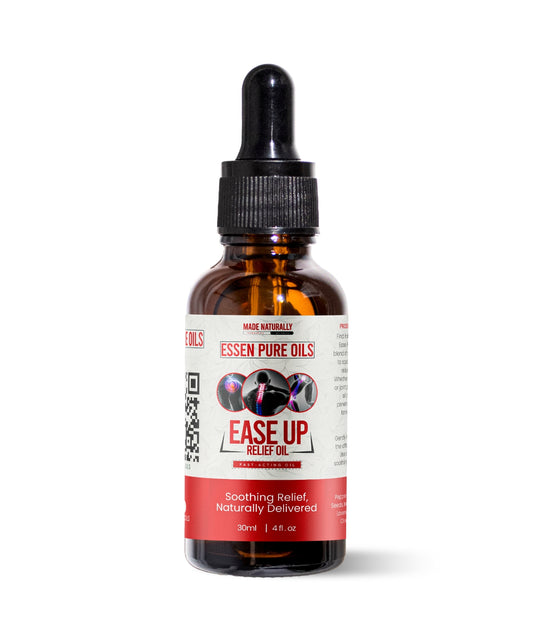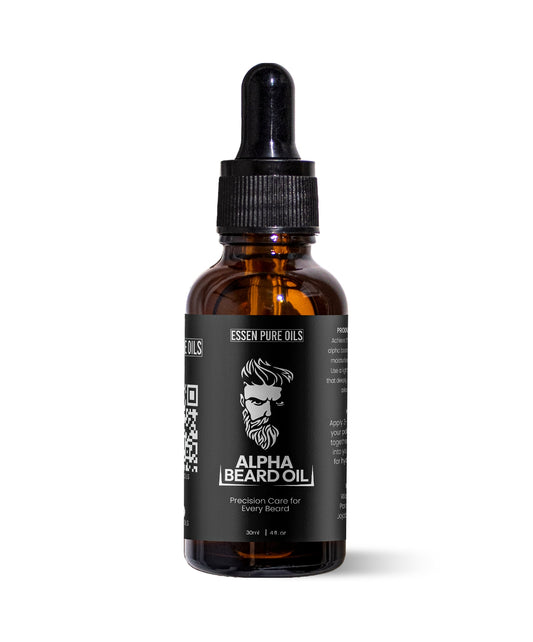Night after night, people reach for pills because pain makes sleep impossible and everyday tasks feel heavy. The frustration of short-lived relief, morning grogginess, and growing worry about side effects is familiar to many who rely on modern painkillers. As awareness of dependency and long-term harm rises, more people are searching for gentler alternatives. And in that, pain relief oils are emerging as a cleaner, body-friendly option.
This article explains how these oils work, what makes them effective, and why increasing numbers of people are switching from synthetic pills to a botanical combination of oils that support the body’s natural healing.
The Problem with Modern Painkillers
By reducing inflammation or blocking pain signals, traditional painkillers like NSAIDs and opioids reduce discomfort, but they hardly ever address the actual cause. Opioids bind to receptors that lessen pain perception, while NSAIDs decrease prostaglandins to reduce inflammation. The rapidity of these mechanisms explains the widespread use of pills.
However, there are drawbacks to frequent or prolonged use like drowsiness, cognitive slowing, stomach irritation, and the possibility of gastric bleeding with certain NSAIDs.
Public health data show rising concern as many patients seek non-pharmaceutical options to avoid dependency and side effects. Surveys reveal a steady increase in interest in natural remedies, with more people preferring treatments that align with holistic wellness.
And because of that, it's no wonder why doctors are now encouraging complementary approaches like physiotherapy, mindfulness, and topical botanicals, to reduce reliance on systemic drugs.
What Makes Organic Pain Relief Oils Different
Organic pain relief oils are concentrated extracts from plants, produced without synthetic pesticides or harsh solvents. They contain bioactive compounds like terpenes, phenols, and esters that have natural analgesic and anti-inflammatory effects.
These oils act directly on the skin and muscles, as opposed to oral medications that goes through the bloodstream. At the same time, their scents can trigger the nervous system, creating a sensory effect. Many blends address the root causes of pain, such as inflammation, tense muscles, or nerve discomfort, rather than just covering up the symptoms.
They appeal to health-conscious customers looking for clean wellness products because of their organic origin, which also means fewer chemical residues and a smaller environmental impact.
Absorption depends on molecular structure and blend quality, like massaging or gently warming the skin, which enhances penetration and circulation. Using high-quality carrier oils, such as jojoba or sweet almond, minimizes irritation and improves comfort.
Rooted in centuries of traditional healing, these plant oils are now being validated by modern research for their active compounds. This combination of topical relief and calming scents offers a balanced, sustainable approach to pain management.
How Pain Relief Oils Work in the Body
The effectiveness of organic pain relief oils is in their chemistry and interaction with the nervous system. Components like menthol, camphor, and eugenol create a warming or cooling sensation that boosts blood flow, relaxes muscles, and decreases inflammation.
This sensory stimulation also distracts nerve receptors from pain, easing tension without overwhelming the system. Scents that are inhaled simultaneously can help reduce anxiety and pain perception by passing through the sense of smell and into the limbic brain, which is the emotional control center.
Instead of blocking pain signals like pharmaceuticals, these oils encourage the body’s natural healing response by improving circulation and reducing oxidative stress. Regular use over time can promote joint relaxation, muscle recovery, and increased comfort levels. The result is a gentle yet effective form of relief that aligns with the body’s rhythm rather than disrupting it.
Comparing Organic Oils vs. Modern Painkillers
Modern painkillers can block pain signals in a matter of minutes, but they wear off quickly, so users need to take them frequently. Over time, tolerance and negative side effects like fatigue and nausea could replace this brief comfort.
Their plant-based compounds work gradually to ease inflammation, improve circulation, and calm the nervous system. While the relief may not be instantaneous, it lasts longer and promotes healing rather than suppression.
Organic oils also nurture emotional balance through aromatherapy, addressing both physical pain and mental stress.In order to safely manage chronic pain, wellness experts worldwide now advise combining or substituting natural oils for medication. The pattern reflects a growing understanding that genuine healing occurs when the body's natural healing rhythm is supported rather than interrupted by artificial short cuts.
Safe Usage Tips for Organic Pain Relief Oils
To get the most out of the organic oils, proper use is key. Make sure to mix essential oils in a carrier oil, using a 1–2% ratio (2–4 drops per teaspoon of carrier oil). Apply to target areas like the temples, neck, joints, or back using gentle circular motions.
Avoid contact with the eyes and always patch test before regularly using it to check for sensitivity. Store oils in dark glass bottles and keep them away from sunlight, to preserve their potency.
Before using any essential oils, get advice from a healthcare professional if you are pregnant, nursing, or taking any medications. By taking these easy steps in account, you can add organic pain relief oils into your daily routine without worrying about side effects.
Conclusion
Fast fixes have become accepted in modern life, but real healing frequently takes your time and getting back in touch with nature. In line with the body's natural rhythm, organic pain relief oils mark a return to an efficient and natural method.
They may not replace medicine overnight, yet they offer a cleaner, more sustainable path to lasting comfort. By incorporating them into your routine, you nurture both body and mind without relying on harsh chemicals.
FAQs
Q1: Do pain relief oils work as effectively as painkillers?
They may take longer to act but can be effective.
Q2: Are these oils safe for daily use?
Yes, when properly diluted and applied externally.
Q3: Can I mix different oils for pain relief?
Absolutely. Combining oils like peppermint and lavender enhances both cooling and calming effects for more complete relief.
Q4: Do essential oils help with chronic pain?
Yes. Consistent topical use can ease long-term muscle or joint discomfort by improving blood flow and reducing inflammation.
Q5: Are organic oils suitable for everyone?
Most adults can use them safely. However, consult a doctor if you’re pregnant, allergic, or managing a specific medical condition.




